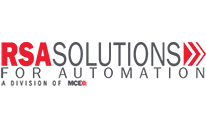Digital transformation is no easy topic for decision makers. On one hand there are huge potentials but on the other hand high risk with new and uncertain business models, high technical innovation speed in a market with traditional lifecycles longer than 10 years and on top the fear that faster competitors are probably already working on their chance to disrupt the market.
A pragmatic way to handle that risk is to calculate the expected opportunity loss and the expected value of information for an appropriate risk reduction. Making decisions under uncertainty is a research topic in itself but
D. W. Hubbard nailed it down in his book “How to measure anything” [42] to an applicable decision making process under harsh management conditions.

According to Hubbard the terms uncertainty and risk are defined as follows:
- Uncertainty: The lack of complete certainty, that is, the existence of more than one possibility. The “true” outcome/state/result/value is not known.
- Measurement of Uncertainty: A set of probabilities assigned to a set of possibilities. For example: “There is a 60% chance this market will more than double in five years, a 30% chance it will grow at a slower rate, and a 10% chance the market will shrink in the same period.”
- Risk: A state of uncertainty where some of the possibilities involve a loss, catastrophe, or other undesirable outcome.
- Measurement of Risk: A set of possibilities each with quantified probabilities and quantified losses. For example: “We believe there is a 40% chance the proposed business model will fail with a loss of 12 million Euro in plat- form and product development costs.”
Test yourself and your organization if any blockers are on your way:
- Start questioning what might destroy your current business
model in the future even if it looks like that it is a different
market (remind the Uber-effect) - Train and value your team – your people are more mission
critical than any other success factors - Watch out for evolving standards and platforms and adapt
to them before they will eat up your current niche - Start a model driven engineering process and work towards
a digital twin. Your customers will make this to a
prerequisite very soon - Do not try to do everything on your own. Don’t waste time
assembling and integrating single components. In order to reduce the overall complexity use system and solution providers as third-party partners
Take away:
- If you did not start so far: start now there is no reason to wait any longer
- If you already started speed up because the other starters might be faster
- If you are already fast get even faster – change will be exponential
- Watch out for strong partnerships – cross domain innovations are often based on cross domain partnerships
- Invest sooner than later in finding the cloud strategy that fits you best
- Don’t be deceived by security issues but take them seriously
- The digital twin is hard to achieve but it is worth working on actively in your engineering tool chain
- Besides the advancements in engineering “Plug & Produce”-able machine components will sky rocket flexibility and efficiency
- Be aware that software is eating the world and machine learning (AI) is eating software
- Even more critical than technological questions will be organizational questions. The winners of tomorrow will have a company culture and information structure that allows the whole organization to learn faster and cheaper
- Increase your ability to manage risk. The digital transformation encloses a huge potential but also a high risk that needs to be managed carefully but without hesitation.
- Do not worry about wrong decisions – fail fast and cheap – otherwise you are simply too slow
- The credo of a success full agile company is: “there is no loosing – either we win or we learn” [Dave Gerhardt, 2016]
Excerpt from Lenze White Paper: The Digital Challenge January 2018 by Dr.-Ing. Hans Egermeier lean-digital-transformation Dipl.-Ing. Jan Vestbjerg Koch Lenze
